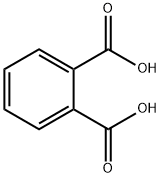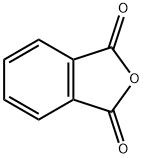A6682212
o-Phthalaldehyde , > 99.0%(HPLC), used for fluorescent marks , 643-79-8
Synonym(s):
OPA;o-Phthalaldehyde;Phthaldialdehyde;o-Phthalic dicarboxaldehyde;o-Phthalaldehyde
CAS NO.:643-79-8
Empirical Formula: C8H6O2
Molecular Weight: 134.13
MDL number: MFCD00003335
EINECS: 211-402-2
| Pack Size | Price | Stock | Quantity |
| 1G | RMB83.20 | In Stock |
|
| 5G | RMB244.80 | In Stock |
|
| 25G | RMB721.60 | In Stock |
|
| 100G | RMB2102.40 | In Stock |
|
| others | Enquire |
Update time: 2022-07-08
PRODUCT Properties
| Melting point: | 55-58 °C(lit.) |
| Boiling point: | 83-84 °C (0.7501 mmHg) |
| Density | 1.13 |
| bulk density | 530kg/m3 |
| vapor pressure | 0.56Pa at 25℃ |
| refractive index | 1.4500 (estimate) |
| Flash point: | >230 °F |
| storage temp. | 2-8°C |
| solubility | The solubility of o-phthalaldehyde is 3g/100 mL diisopropyl ether, 5g/100mL deionized water, 20g/100mL chloroform, or 20g/100mL acetone at 20°C. |
| form | powder |
| color | yellow |
| PH | 7 (53g/l, H2O, 20℃) |
| Water Solubility | soluble |
| Sensitive | Air Sensitive |
| Merck | 14,7368 |
| BRN | 878317 |
| Exposure limits | ACGIH: SL .025 mg/100 cm2; Ceiling 0.1 ppb (Skin) |
| Stability: | Stable. Air sensitive. Incompatible with strong oxidizing agents, strong bases. |
| InChIKey | ZWLUXSQADUDCSB-UHFFFAOYSA-N |
| LogP | 0.99 at 30℃ |
| CAS DataBase Reference | 643-79-8(CAS DataBase Reference) |
| NIST Chemistry Reference | O-phthalaldehyde(643-79-8) |
| EPA Substance Registry System | 1,2-Benzenedicarboxaldehyde (643-79-8) |
Description and Uses
o-Phthalaldehyde can be widely used for precolumn derivatization of amino acids in HPLC separation or Capillary electrophoresis. For flow cytometric measurements of protein thiol groups.
Safety
| Symbol(GHS) |    GHS05,GHS06,GHS09 |
| Signal word | Danger |
| Hazard statements | H301-H314-H317-H335-H410 |
| Precautionary statements | P260-P273-P280-P303+P361+P353-P304+P340+P310-P305+P351+P338 |
| Hazard Codes | Xi,T,N,C |
| Risk Statements | 36/37/38-43-34-25-50-52/53 |
| Safety Statements | 26-28-36-45-36/37/39-61-37/39 |
| RIDADR | UN2923 8/PG 2 |
| WGK Germany | 3 |
| RTECS | TH6950000 |
| F | 1-8-10 |
| Autoignition Temperature | 480 °C |
| Hazard Note | Irritant/Air Sensitive |
| TSCA | Yes |
| HazardClass | 8 |
| PackingGroup | Ⅱ |
| HS Code | 29122900 |
| Hazardous Substances Data | 643-79-8(Hazardous Substances Data) |
| Toxicity | LD50 orally in Rabbit: 178 mg/kg LD50 dermal Rat > 2000 mg/kg |



